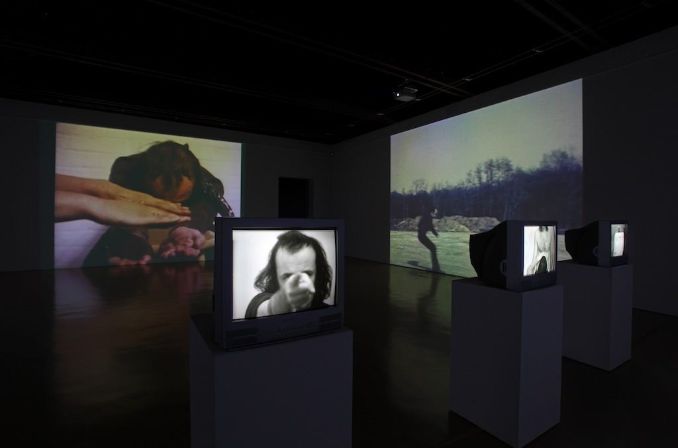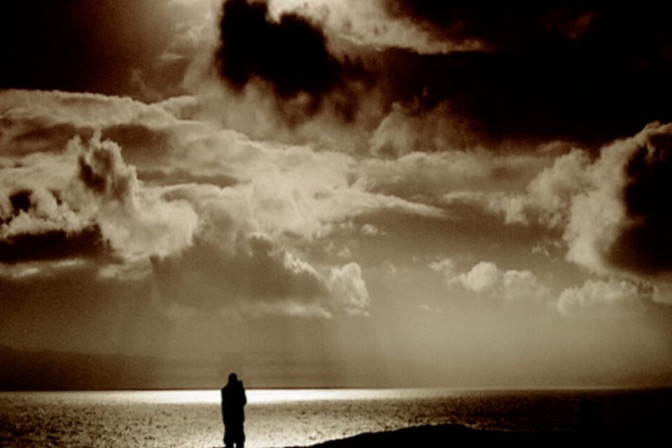Mio Shirai (b. 1962, Kyoto) emerged in the late 1980s with bold installations in Tokyo—most notably at Hillside Gallery. Her early solo exhibitions there in 1989 and 1990 showcased sculptural works incorporating ready-made objects and reflective materials, establishing the foundation for her internationally recognised and conceptually rich practice.
Shirai’s short films are infused with an enigmatic and often absurd sensibility, marked by a quiet suspense that simmers just beneath the surface. These works retell traditional stories and myths for a mature audience, weaving together allegory and ambiguity. To borrow the artist’s own words, her work appears to “wander from the right path,” suggesting a deliberate drift away from linear narrative and conventional logic.
Her practice was featured in A Gift to Those Who Contemplate the Wonders of Cities and the Marvels of Traveling, a two-person international residency and touring exhibition. This project paired Shirai with London-based Singaporean artist Erika Tan. In the summer of 2008, each artist undertook a residency in the other’s country—Tan in Japan and Shirai in the UK—immersing themselves in unfamiliar urban and cultural landscapes. The resulting body of work, encompassing film, video, and photographic installations, was developed through this sustained process of cross-cultural exchange and reflection.
Shirai’s work Forever Afternoon is directly inspired by this thematic framework and the imaginative tale of Alice in Wonderland. In this piece, Alice—portrayed by Shirai herself—symbolises the Japanese delegates who traveled through the northeastern part of England 150 years ago, returning with new perspectives that would help shape Japan’s modernisation. A moment in the narrative where Alice tells the March Hare, “that’s not very ‘civil’ of you,” becomes a pointed metaphor for the mission of those delegates: to learn from European notions of civilisation. Shirai’s photographic work draws visual connections through these layered comparisons, while her accompanying drawings give insight into her imaginative and conceptual process.
Filmed at locations that inspired Charles Dodgson (Lewis Carroll) in his creation of Alice’s Adventures in Wonderland and Through the Looking Glass, as well as the grounds of Whitburn Hall, home of Lady Hedworth Williamson. Lady Williamson was a second cousin to Alice Liddell, the young girl who was the muse for Dodgson’s famous stories.
Read >> Artist Website
The conversations between Alice (as portrayed by Shirai) and the inhabitants of Wonderland explore how Lewis Carroll disrupted conventional logic and conversational norms to generate humour and suggest deeper meanings. Carroll, credited as a pioneer of “nonsense literature,” manipulated language in ways that were deliberately illogical, yet poetic and oddly familiar. His celebrated nonsense verse, Jabberwocky, blends invented neologisms—like “frabjous,” “slithy,” and “vorpal”—with familiar linguistic rhythms, creating an entirely new kind of expressive reality.
These surreal and often disorienting exchanges between Alice and the creatures of Wonderland become not just humorous but also revealing, exposing the strangeness and contradictions of the adult world as seen through a child’s eyes. They highlight the breakdowns and complexities of communication and serve as a subtle critique of the rigid social codes of Victorian society. In Carroll’s tale, Alice gradually learns to master the shifting “language game” of Wonderland in order to assert herself and avoid being undermined or bullied. Similarly, in Forever Afternoon, Shirai constructs a world in which language is fluid, performative, and shaped by context—much like cultural perception itself. Words in this space are no longer static; they become adaptable tools of negotiation and transformation.
Shirai, like Carroll, invites her audience to inhabit a world where perspective, meaning, and identity are constantly in flux. Through her interweaving of fiction, history, and personal performance, she explores how language and cultural symbols can shift across time and geography. Her use of Alice as a proxy for historical emissaries blurs the line between past and present, fantasy and documentary.
A Gift to Those Who Contemplate the Wonders of Cities and the Marvels of Traveling was co-curated and produced by Keith Whittle and Alistair Robinson, in partnership with BankART 1929, and in association with P3 Art and Environment and The Graduate School of Film and New Media at Tokyo National University of Fine Arts and Music. The residencies and exhibitions were generously supported by The Daiwa Anglo-Japanese Foundation, The Japan Foundation, The Great Britain Sasakawa Foundation, Arts Council England, and Japan 150.












